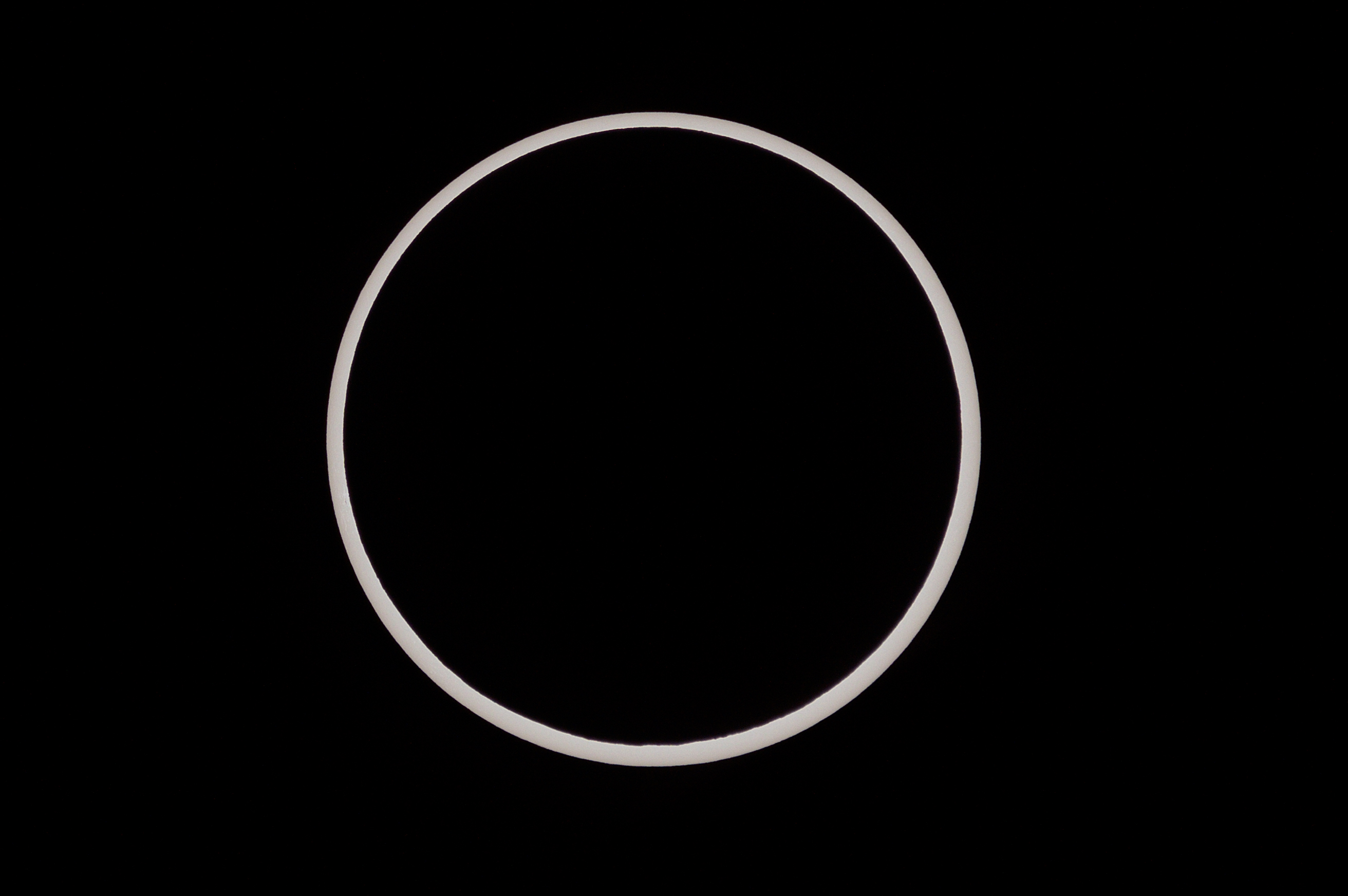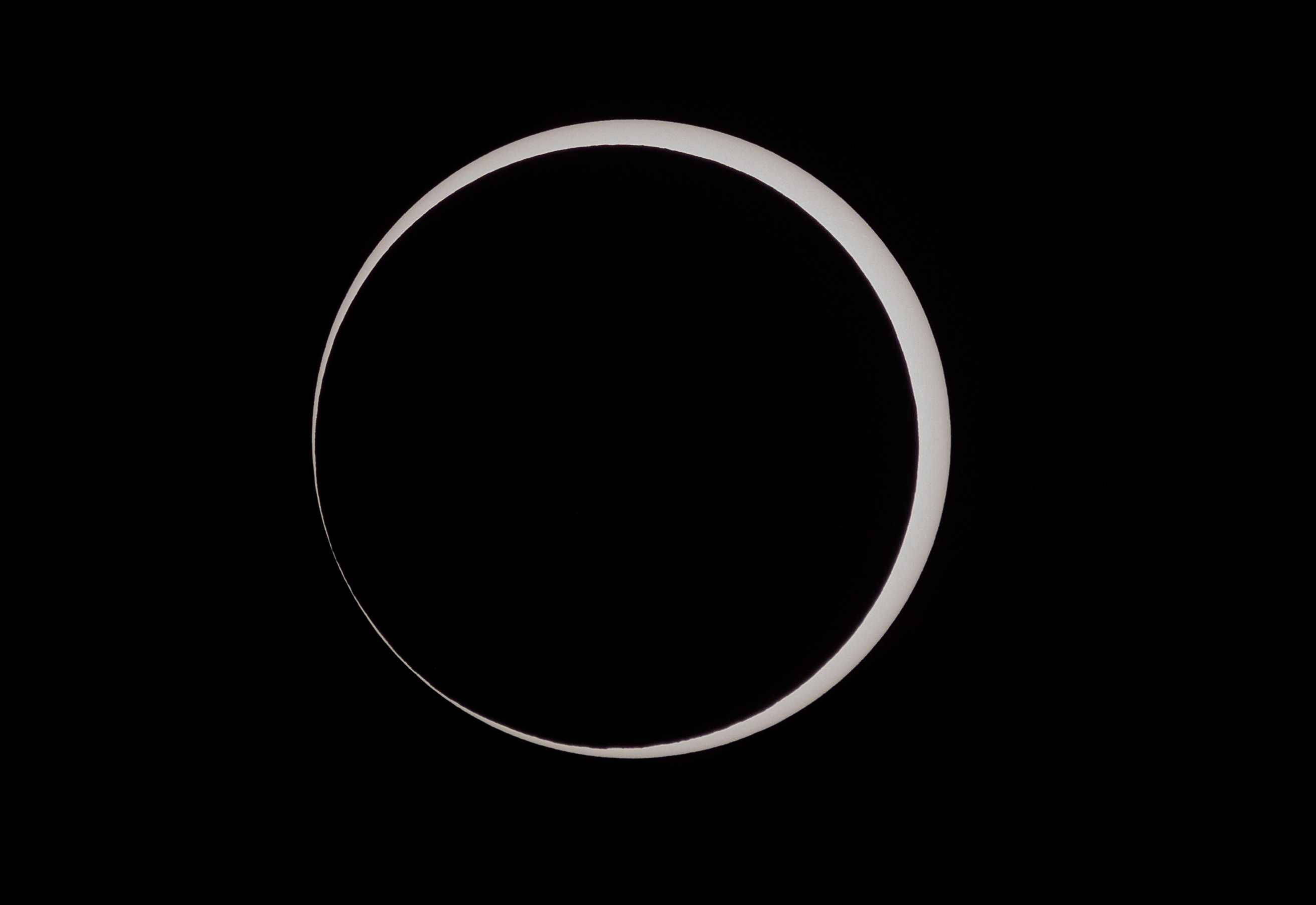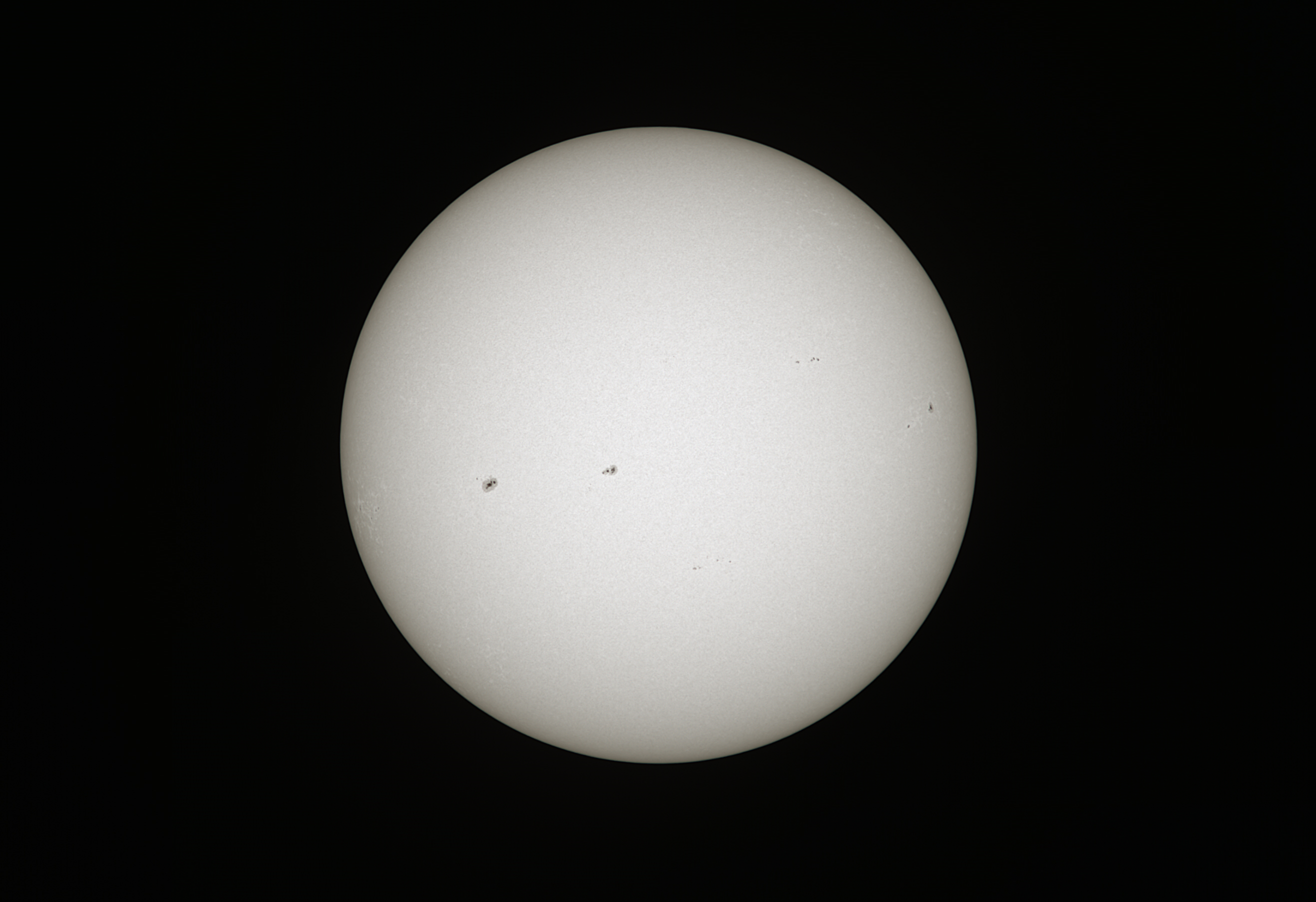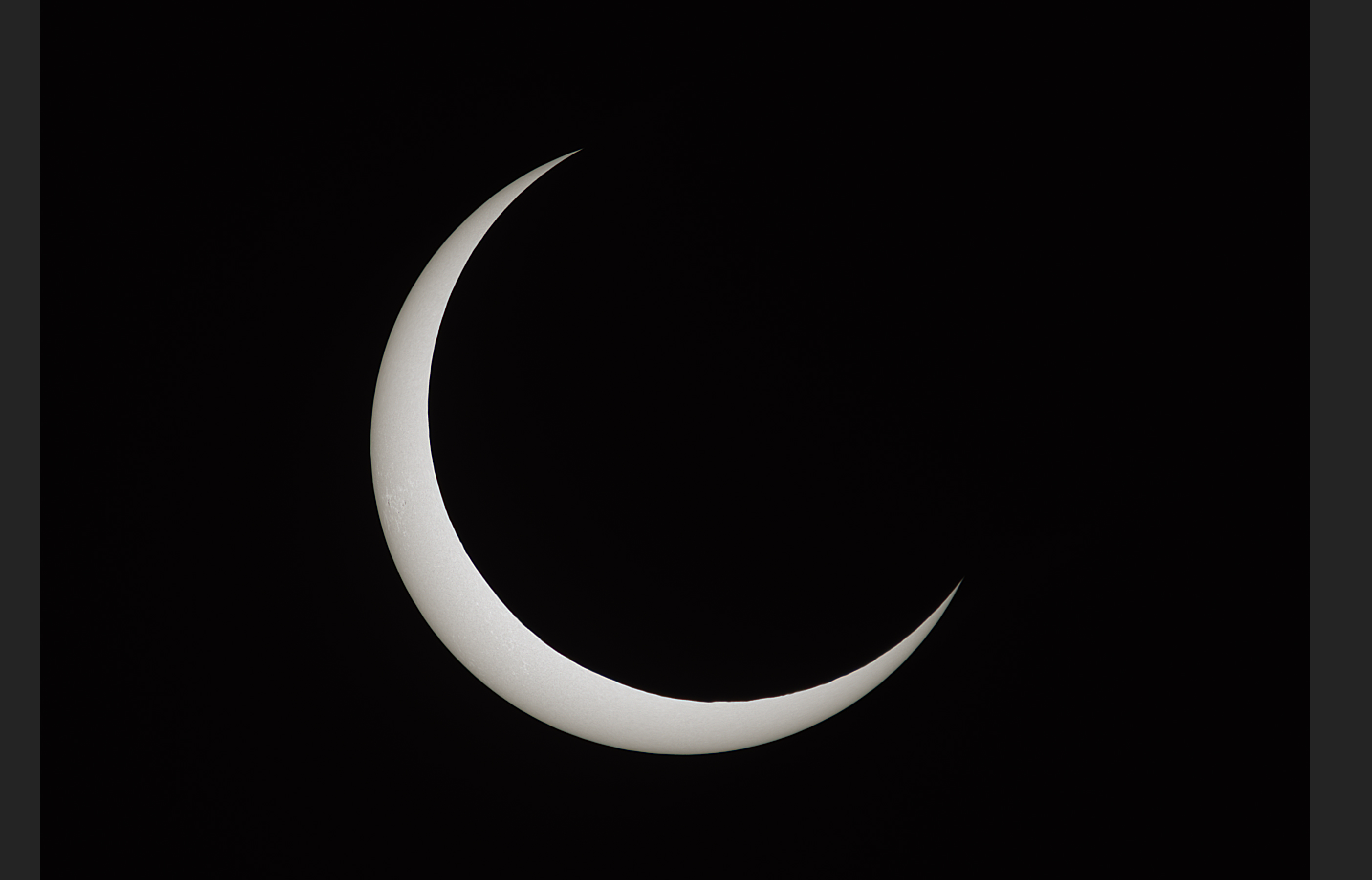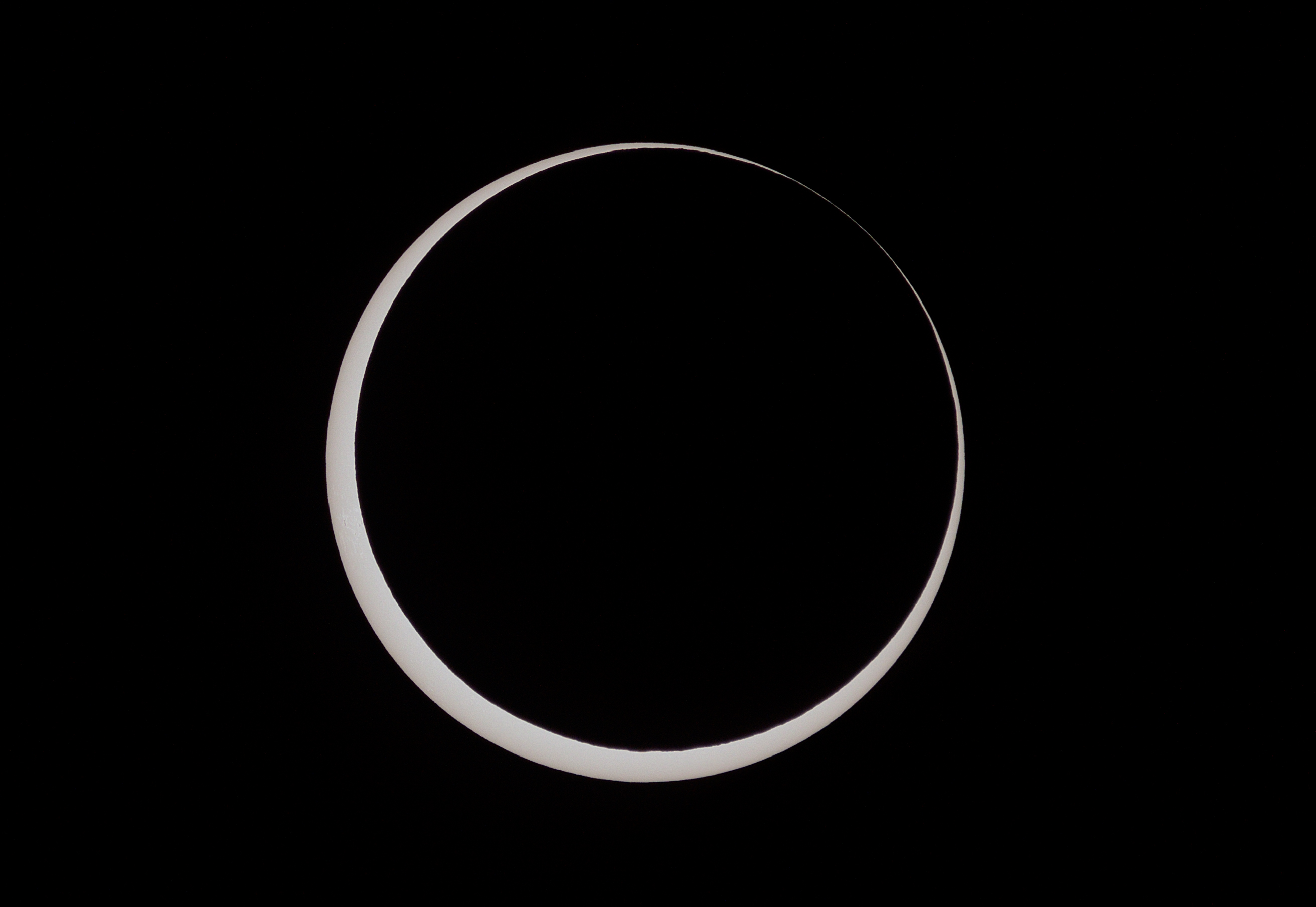14 October 2023
Forest Gump Hill - Utah - USA
Local circumstances
Location : North +37° 06' 16.85", West 109° 59' 07.6"
Duration of totality : 4mn 43s
C1 : 15h 10mn 27.2s UT
C2 : 16h 29mn 22.7s UT , Alt = 31.7°
Max : 16h 31mn 44.4s UT, 32.2°
C3 : 16h 34mn 06.0s UT, Alt = 32.4°
Equipement
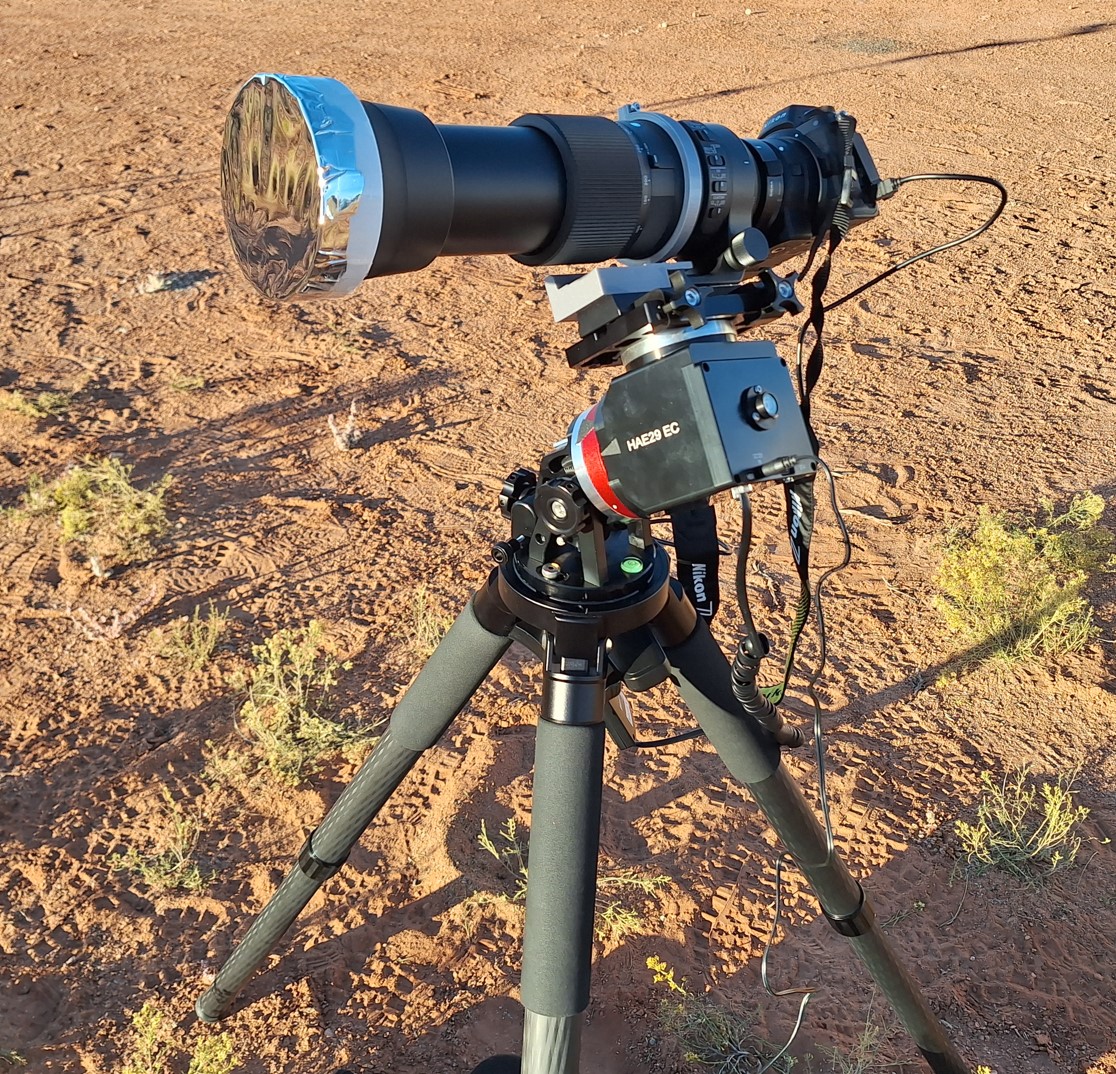
Sigma 150-600 mm f/6.3 with 1.4×extender. Manual focusing. Stabilisation OFF.
Nikon Z6, 14-bit RAW mode, 24×18 mm acquisition, silent mode. Pixel size = 5.94 micron pixel.
Image scale = 1.5 arsec/pixel
Baader Astrosolar ND3.8 (up to 20 min before C2) and ND5 (afterward).
Exposure time : 1/8000 s at 100 ISO with the ND3.8, 1/1600 at 200 ISO with the ND 5.
For partial phases : stack of 15 frames out of 100 frames acquired at 7.1 fps (=15 s bursts).
Mount : iOptron HAE29EC.
Seeing conditions : good seeing. Coronal sky. No cloud. No wind.
The ESF (Edge Spread Function) can be measured directly as the radial profile of intensity accross the lunar limb.
The PSF is the derivative of the ESF. It was calculated on the G channel. The derivative profile was then fitted with a gaussian curve with Fityk software. The result is an estimated FWHM of 2.1 pixels (or 3.1 arsec).

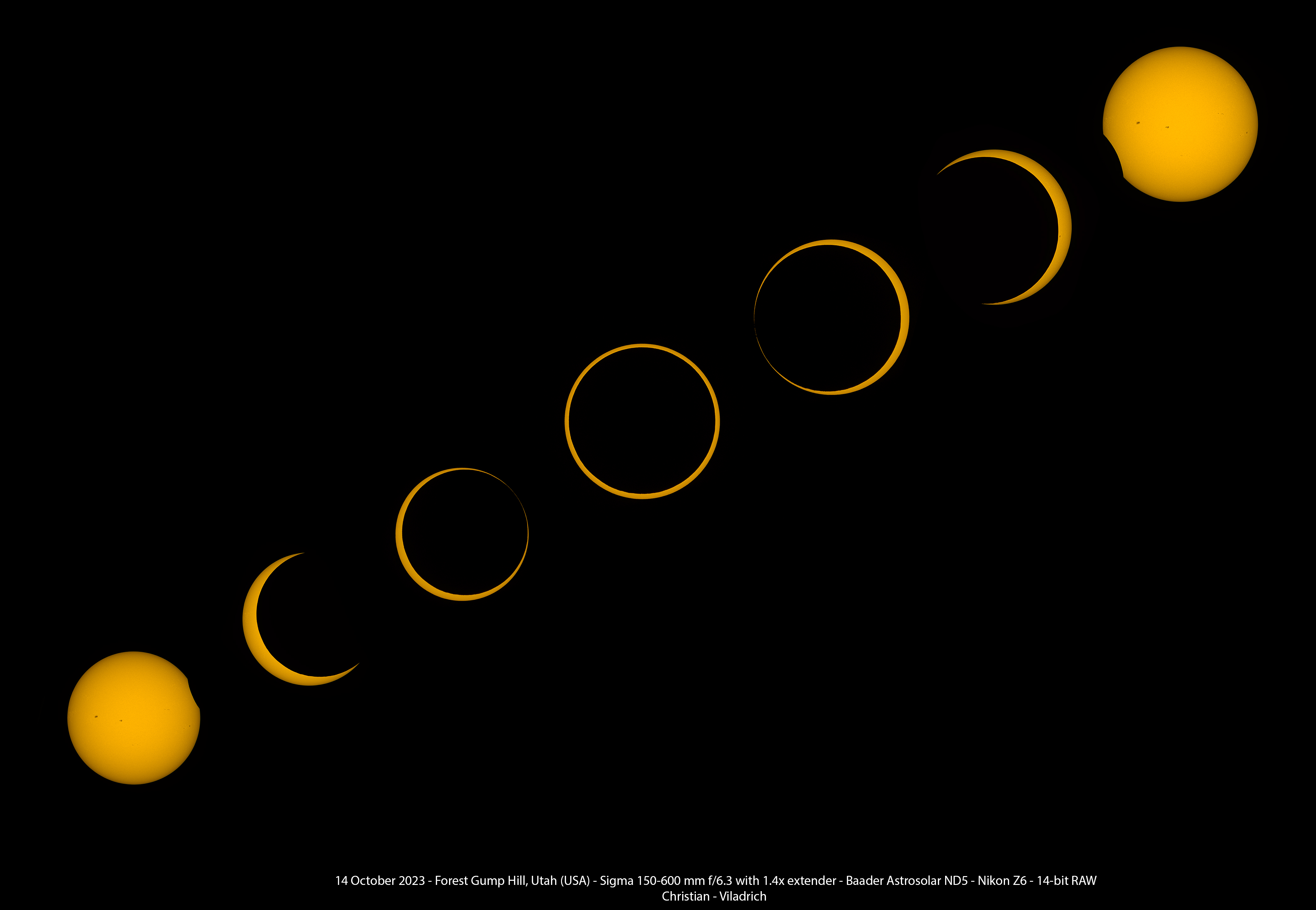
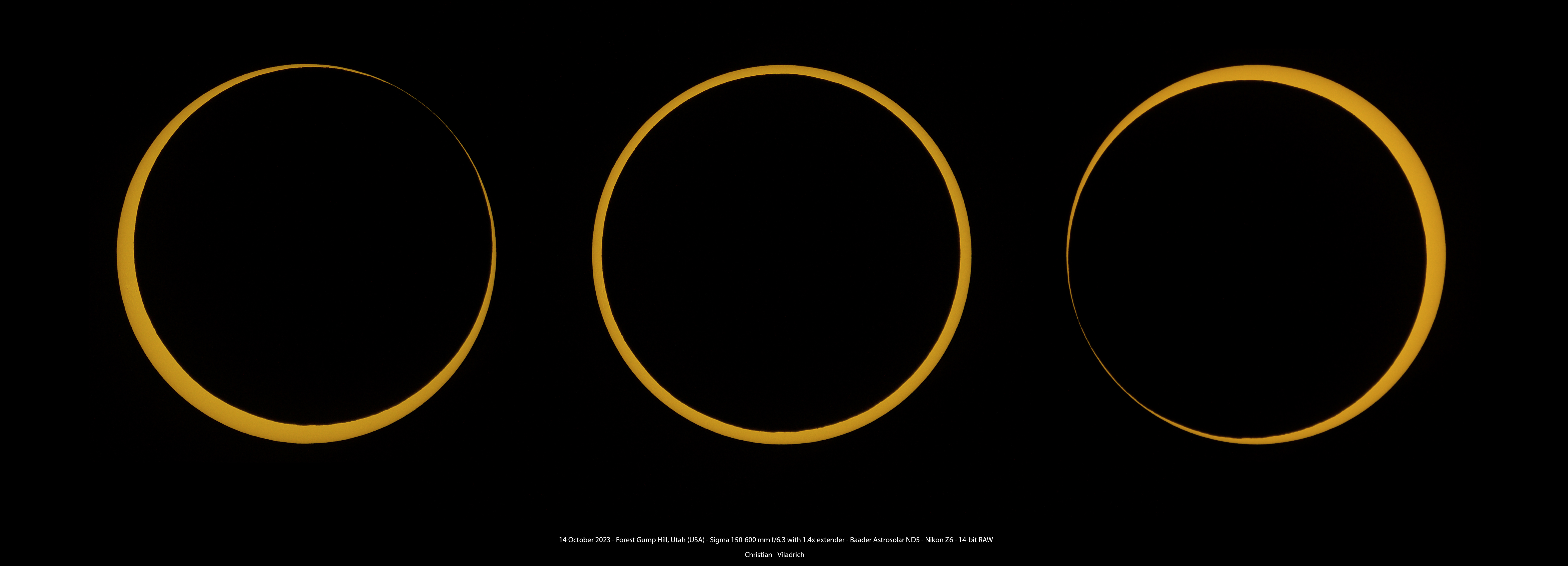
Lunar profile
The progression of the Moon in front of the solar disk results in a high resolution scan of the lunar limb near C2 and C3 contacts.
In the following figure, this "scan" is compared to the lunar limb profile calculated by Eclipse 2.0 App using Kaguya data.
